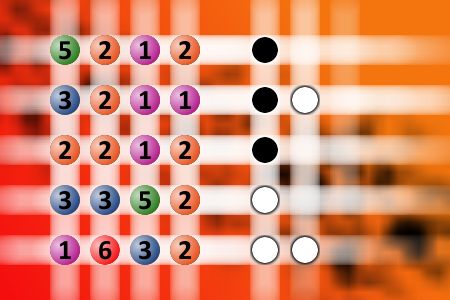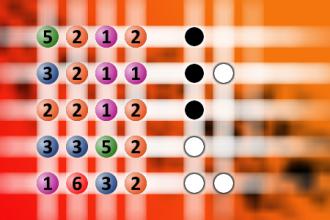Find the right combination
The computer chose a secret code (sequence of 4 digits from 1 to 6). Your goal is to find that code. Black circles indicate the number of hits on the right spot. White circles indicate the number of hits on the wrong spot.Correct answers: 23
The first user who solved this task is Djordje Timotijevic.
#brainteasers #mastermind

One day a man spotted a lamp b...
One day a man spotted a lamp by the roadside. He picked it up, rubbed it vigorously, and a genie appeared.
"I'll grant you your fondest wish," the genie said.
The man thought for a moment, then said, "I want a spectacular job, a job that no man has ever succeeded at or has ever even dared try."
"Poof!" said the genie. "You're a housewife."
"I'll grant you your fondest wish," the genie said.
The man thought for a moment, then said, "I want a spectacular job, a job that no man has ever succeeded at or has ever even dared try."
"Poof!" said the genie. "You're a housewife."

